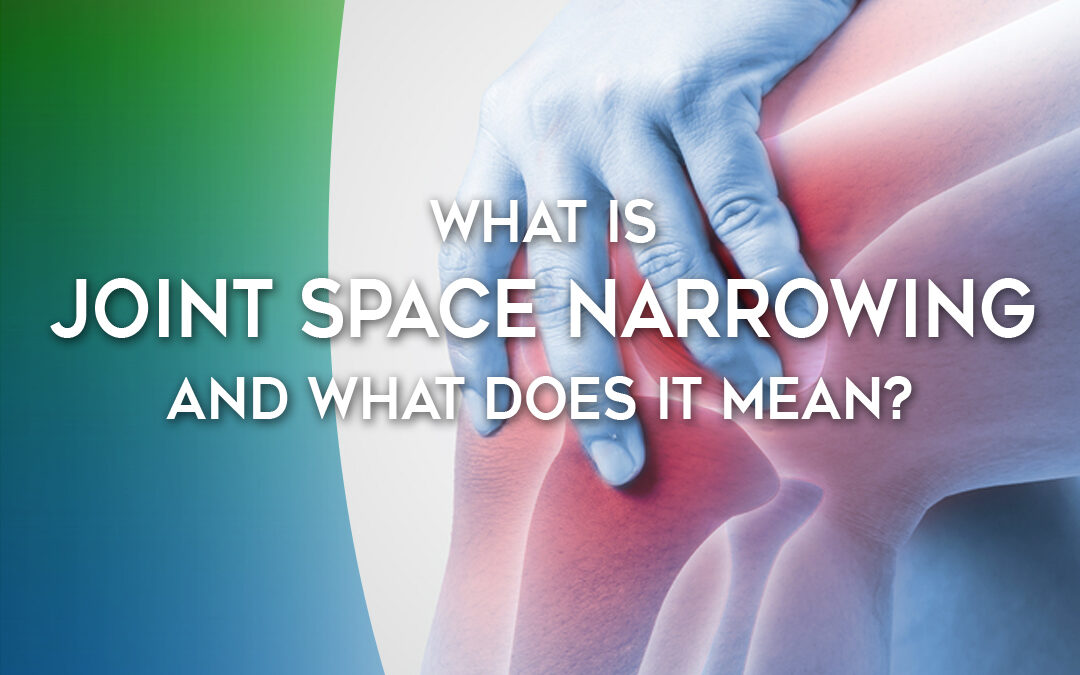In a healthy joint, space exists between the individual bones that make up the joint. Joint space is maintained by tough, smooth articular cartilage that covers the bone surfaces. This articular cartilage acts as a cushioning and shock absorbing material that allows the bones to glide over each other without friction during movement.
Joint space narrowing (JSN) occurs when articular cartilage begins to wear away and the space between bones becomes smaller. Less space makes it difficult for the joint to move freely, causing pain, stiffness, and loss of motion in the joint. Eventually, cartilage wears away altogether, causing painful bone-on-bone pressure and friction during movement.
Keep reading to learn more about JSN and its impact on the health and function of your joints.
What Is the Significance of Joint Space Narrowing?
In many cases, articular cartilage loss and joint space narrowing are early indicators of arthritis. Osteoarthritis and rheumatoid arthritis are the two most common types of arthritis.
- Osteoarthritis is a degenerative condition that develops when gradual wear and tear causes cartilage and bone breakdown within joints.
- Rheumatoid arthritis is an inflammatory condition that develops when the body’s own immune system attacks the tissues within joints, causing cartilage and bone breakdown.
A clinical finding of joint space narrowing is often one of the first steps in diagnosing osteoarthritis, rheumatoid arthritis, or another form of arthritis.
Other causes of JSN include overuse and aging.
Signs and Symptoms
The primary symptoms of JSN are joint pain, stiffness, and loss of range of motion in the affected joint. If joint space narrowing is a result of arthritis, these symptoms will continue to worsen as joint damage and cartilage loss progress.
If you have new, worsening, or continuing joint pain, see your doctor for an evaluation as soon as possible. Your doctor will take X-rays and an MRI to check for joint space narrowing and other damages to determine the cause of your pain and symptoms.
Treatment Options
Unfortunately, joint space narrowing is irreversible. If you’ve been diagnosed with JSN, your doctor will likely prescribe non-surgical treatments with the goals of reducing pain and maintaining as much joint flexibility as possible.
- Medications. If the cause of JSN is osteoarthritis, over-the-counter anti-inflammatory medications (ibuprofen, naproxen) can relieve mild to moderate joint pain, swelling, and inflammation. If you’ve been diagnosed with rheumatoid arthritis, your doctor may prescribe disease modifying anti-rheumatic drugs (DMARDs) that slow down the progression of joint damage.
- Injections. Cortisone injections bring short-term pain, swelling, and inflammation relief to achy joints. However, you’ll only be allowed to receive a certain number of injections a year. Additionally, hyaluronic acid injections can bring short-term pain relief by lubricating the painful joint and making movement easier.
- Exercise. Low-impact exercise like walking, swimming, and yoga is essential for maintaining joint strength, flexibility, and range of motion.
- Weight loss. If you’re carrying excess weight, dropping the extra pounds will reduce the amount of stress and pressure on your joints.
While the treatments listed above can mask symptoms, they cannot reverse joint space narrowing or prevent continued degeneration of the joint. If you have severe joint damage, daily pain, and limited mobility, your doctor may recommend joint replacement surgery. A procedure like hip or knee replacement is a major surgery with risks including infection, blood clots, nerve injuries, or prosthetic malfunctioning. Additionally, joint replacement surgeries are costly and require a long rehabilitation and recovery period.
Before agreeing to joint replacement surgery, find out if you’re a candidate for the iO-Core™ procedure. The iO-Core™ procedure treats the root cause of joint pain to relieve pain, restore function, and prevent further joint damage. It’s a minimally invasive procedure that combines orthopedic methods with biologics to address both surface cartilage loss and underlying bone damage in a degenerating joint. It requires no hardware or implants, and many patients begin experiencing pain relief within one week following surgery.
Find Out If You Qualify for iO-Core™
Many people who were told they needed a total joint replacement surgery have found long-term pain relief and greater mobility from iO-Core™ instead. Contact our team today to learn more and see if you qualify.

